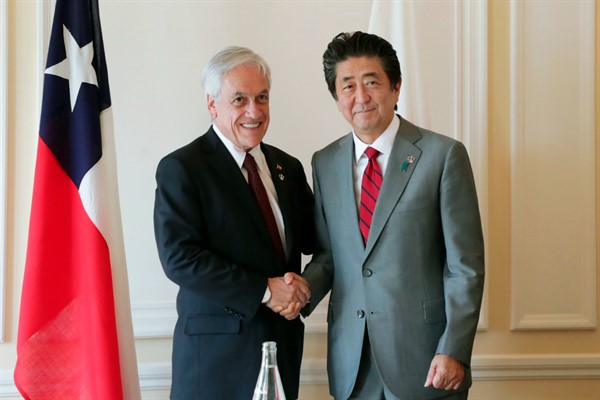Latin America and Japan are often thought of as only loosely connected, through a patchwork of free trade agreements and people-to-people ties. But this summer, Chile finalized a deal that indicates a significant convergence of geostrategic interests between Japan and the Americas. After much deliberation, Chile chose an undersea route, backed by Japan, for the first direct fiber-optic cable link between South America and the Asia-Pacific.
The Japanese proposal traverses 13,000 kilometers from Chile across the Pacific Ocean—more than 8,000 miles—eventually connecting with existing undersea cables between Japan and Oceania. The new trans-Pacific route would utilize a link between Japan and Australia that just became operational in July, and then expand it eastward to New Zealand and then across the Pacific to South America. In choosing the Japan-backed route, Chile rejected a competing offer from Chinese telecommunications giant Huawei, which designated Shanghai as the terminus.
The initial tender for the multibillion-dollar project has been won by Japan’s NEC, and Chile will accept supplementary contracting bids from multinational companies next year, with the most likely candidates coming from global leaders in undersea cables. Alcatel Submarine Networks, in France, and Subcom, in the United States, are potential contenders. Undersea cables contain approximately 95 percent of all international communications and data, and are widely considered critical infrastructure for national security purposes. Thus, upon completion, the new cable line will become an important strategic link between not only Japan and Chile, but between the Asia-Pacific and Latin America.

